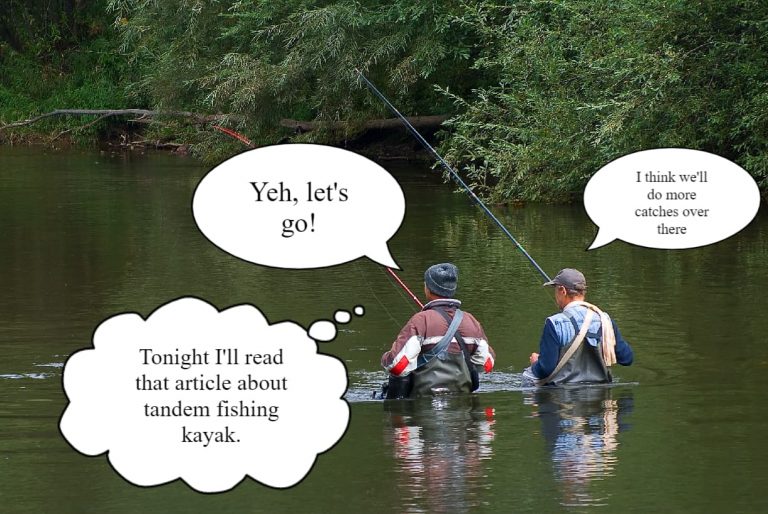How to Store a Kayak: Preservation Is the Cure
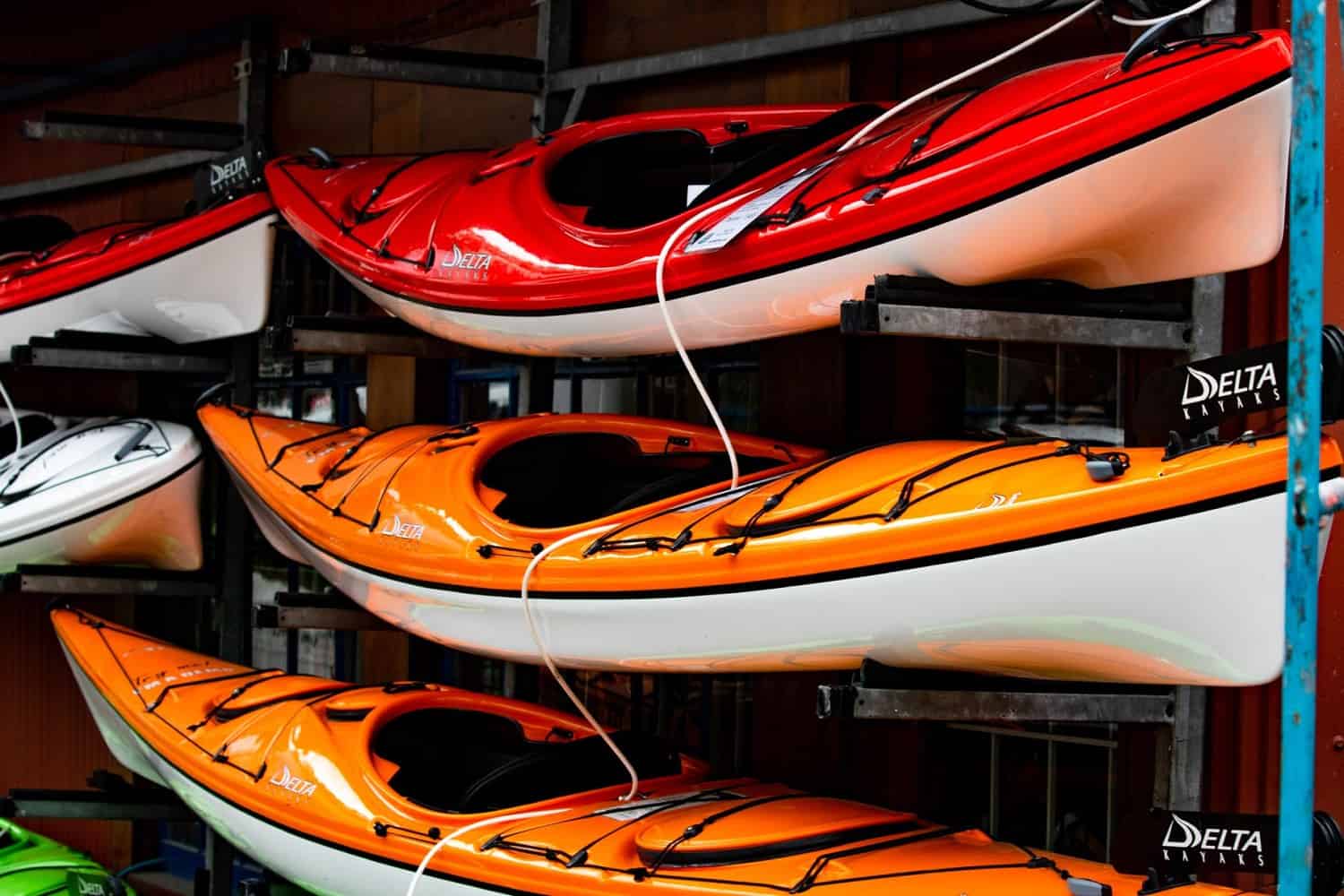
Share this article:
TopNotch Outdoor is independent – we research, test, and rate the top products to help you make the right buying choice. We sometimes use affiliate links and may receive a small commission on your purchase. Learn more…
You like kayaking that’s why handle that big piece in every places. Once you begin kayaking, your biggest concern is how to store a kayak, and we address this concern in our article below.
I used to be a tad overweight and found kayaking in my quest to undertake an unorthodox fitness regime. I haven’t looked back since!
If you own a kayak like me, you’ll know that it’s a seasonal activity, as you can’t take your kayak out during rainy seasons. During this period, it’s crucial to properly store your kayak.
We discuss the benefits and proper methods of how to store a kayak in this article to ensure that it remains safe and secure for when it’s time to hit the waters again.
Tips on how to store a kayak include:
How Should You Store Your Kayak : Quick Tips
- Choose somewhere accessible for short term storage.
- Make it safe to prevent theft.
- Protect the kayak from sunlight and other weather.
- Ensure the kayak is clean and dry when you store it.

Reasons to Properly Store Your Kayak
If you’re new to kayaking, you may be wondering what the fuss is all about when it comes to properly storing your kayak. Believe you me, this is absolutely crucial for a wide range of reasons. We discuss some of these vital reasons below.

Protection From the Elements
Your kayak is a fairly sensitive piece of equipment that needs to be preserved from the elements for your own safety. Damaging the kayak during the off-season means that the kayak will not be safe and properly functional when you want to take it out for a spin during the summer months.
Various weather elements such as sun, snow, and rain can negatively impact the body of your kayak. By storing it safely and away from the elements, you prevent the body from damage, such as warping or fading.
Preventing Distortion
The elements are certainly damaging to a kayak, but sometimes, you can be your own worst enemy. This is true, especially if you haven’t stored your kayak correctly, and it has led to dents, distortions, or other serious damage to various parts of its exterior.
Theft Protection
You may believe that a kayak is a tough item to steal and you might think it’s okay to leave it outside your garage, but this is asking for trouble! Kayaks do get stolen. Maybe not by kayaking enthusiasts, but by individuals looking to sell the boat and make a profit.
It’s crucial to keep your kayak in a locked space to prevent it from drifting into the wrong hands.
Safety Measure
A kayak is a hefty item that can cause a fair amount of damage to individuals if you haven’t stored it properly. If a kayak falls on you, trust me, you’re in trouble, no matter how strong and muscular you are.
Even if you can withstand the brunt of a falling kayak, it can be dangerous for those around you as well. Thus when you’re looking at how to store a kayak, you need to ensure that you secure the item in a place that makes it safe for the kayak and all parties involved.
Tips for Short-Term Kayak Storage

There’s a big difference in the measures you’ll need to adopt based on the duration you wish to store your kayak. If you’re looking to put away your kayak for a few days to a week, you’ll have to consider a short-term option. These are the various situations you’ll need to consider a short-term storage option:
Even when you’re looking to use your kayak daily, you’ll still need to put it away when you’re done using it for the day. You don’t run a risk of damaging your kayak during this period unless it drops from your ceiling or wall, but incorrectly storing the kayak consistently on a daily basis can still damage it over time.
When you’re wondering how to store a kayak for a short-term basis, these are the factors you’ll need to consider while picking out a storage location.
Accessibility
Since you’re likely to use the kayak on a regular basis during the peak season, you don’t want to store your kayak in a place that’s tough to reach. If you’re planning on placing it on your ceiling or wall, make sure that there aren’t too many objects in the way as you try to store and remove the kayak.
Taking Care
You may not feel very strongly about putting in the care to store your kayak properly during short-term storage. We’d suggest being extra careful when you’re using your kayak regularly because damage to the boat will make it troublesome while you use it on the waters.
Use a Lock
Even if you’re using the kayak regularly and you’re storing it for a short period, it’s best to lock up the kayak overnight to prevent theft. This is especially useful if you’re leaving your kayak outdoors. Using an alarm, security tools, or even a camera can be extremely vital in preserving the safety of your kayak.
Tips for Long-Term Kayak Storage
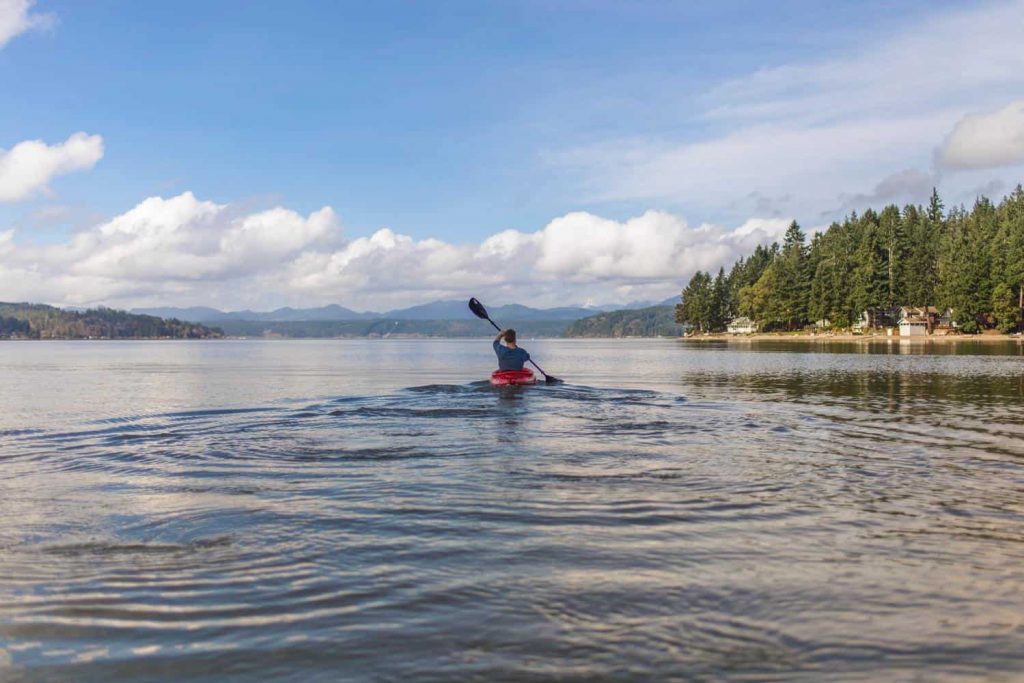
While short-term storage comes down to ease of access and retaining the form of the kayak, the challenges posed during long-term storage are entirely different. Even the type of storage you use will come down to the type of kayak you have in your possession.
If you’re using an inflatable kayak, it’s relatively easy when you’re considering how to store a kayak. You simply need to deflate the equipment and fold it away in a safe space that’s cool and dry.
If you have a kayak that isn’t easy to fold or collapse, you will have to consider a permanent spot that’s designed purely for the sake of the kayak. When you’re putting away your floatable for the long haul, make sure to consider the following pointers:
Isolate a Space
The first thing you’ll need to do when figuring out a long-term storage option for your kayak is to isolate a space that will be solely dedicated to your equipment.
You should look to keep the kayak away from common areas as there is a greater chance of bumps and falls occurring. You also don’t want to let the kayak get in the way of items that you intend to use on a regular basis.
Clean Your Kayak
Apart from storing your kayak, you also need to think about the process of preparing your kayak for storage during the long haul. It’s crucial that you clean your kayak thoroughly before putting it away to maintain its overall features.
Try to clean the kayak thoroughly both inside and out before storing it away. Also ensure that the kayak is completely dry before storage in order to prevent mold and mildew from building up inside the equipment.
You’re less likely to see any damage after the long break when you put away a clean kayak. It’s also far less work to have your kayak ready whenever you need it after the break.

When you’re thinking about how to store a kayak, you’re probably wondering if you should go indoors or outdoors during short and long breaks, and that’s a perfectly valid question. This actually comes down to the space available in your home and the convenience associated personally with either storage option.
Even if your choices are limited in this matter, it’s best to have some information before you opt for either choice.
Outdoor Storage
Storing a kayak outdoors is possibly the best option for you during regular usage as you’re likely to use it on a daily or weekly basis. It’s not advisable to leave the kayak on the body of water you use regularly, but it’s always great if it can be near the water for easy access.
Picking up a dock attachment will help you prevent your kayak from being on the water at all times, but it also allows for easy access when you want to hit the water with urgency.
As long as it’s not in the water, you can look to store your kayak outdoors during the peak season. The ideal setting would be close to the body of water but under a cover or in a shed of some kind to protect it from the elements.
Some of these options include:
If you’re fortunate enough to live in a town or city with a mild climate all year long, you can certainly look to store your kayak outdoors even during longer breaks. Just make sure to use the right security measures in order to prevent theft of your beloved water buddy.
It’s also vital that you check your kayak when it’s stored outside and inspect it for any damage before usage. This includes checking for moisture, eliminating pests, and ensuring that the cover is properly used during the time off.
If you’re facing any of the above issues during your spot-check, just clean the kayak before usage and consider moving it to a new location if necessary.
Indoor Storage
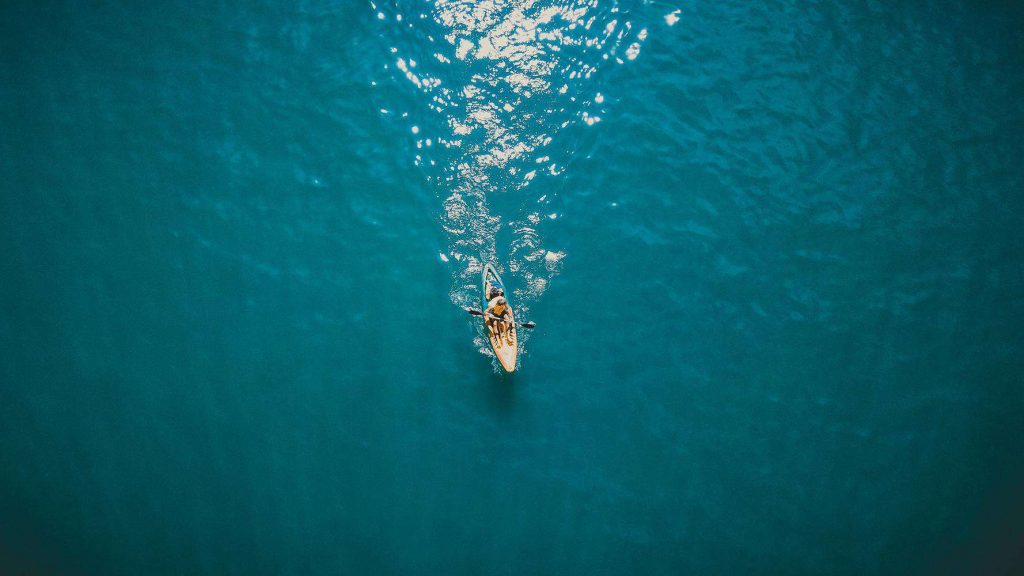
There’s nothing like the safety of indoor storage when you’re looking to store your kayak for a short or long term basis. The ideal location for how to store a kayak is in the garage. Using a hoist if you have the courage to tinker a little bit.
But you can also look to use other less-frequented areas such as the shed or basement if you’re lacking in space.
If you have a spare room in your house, you can also store your kayak there if you don’t intend to use it for an extended period. Storing a kayak indoors, however, does come with its own set of challenges. Here are some of our top pointers when you’re resorting to this storage option:
Storing a kayak indoors does ensure that you keep it safe from most types of damage and theft, but the key point to remember here is that it shouldn’t get in your way when you’re moving about your home. This can not only damage your kayak but is also dangerous for members of your household.
Look to hang your kayak on a wall or ceiling, as this tends to keep it out of the way. The only thing you need to ensure here is that the kayak is suspended properly, as a falling kayak can be deadly.
How Not to Store Your Kayak
So far, we’ve discussed most of the “do’s” of storing your kayak, but it’s also important to look at some of the “dont’s” involved in the process as well. Here are some of the most common mistakes made by users as they look to put away their boat.
Places to Avoid
Regardless of whether you’re looking at short or long-term storage, there are some locations you must absolutely avoid while you look to store your kayak.
Proximity to Animals
Animals actually adore kayaks almost as much as humans, but for wildly different reasons. Small animals, in particular, love to make a home out of your naval vessel, especially when it’s upturned.
Even pests look out for closures such as kayaks to turn into their home during long season breaks. Make sure that your kayak is away from the wandering animals in your locality, and use a cover to prevent any damage in case one of them tries to sneak their way in.
Ground Storage
Leaving your kayak on the ground is possibly one of the worst locations to store your boat. This rings especially true if you’re leaving your kayak outdoors. Simply allowing the kayak to make contact with the ground can cause damage, especially during humid or cold days.
Hanging your kayak off the wall or ceiling will prevent such issues, and you can bolster this move with the help of some weather-proof or waterproof tarps.
Avoid Well-Frequented Areas
Storing your kayak in a location that you use frequently is a disaster waiting to happen. Placing it around items you use often can be just as dangerous as well. You risk knocking into the boat or knocking down various items when you leave it in such a location.
It’s also dangerous when you have guests, as they won’t know the proper method of navigating around your kayak, which leaves the potential for an injury wide open.
Weather Conditions to Avoid
Apart from the location itself, you should also be wary about the weather conditions you’re exposing your kayak to during storage. Some weather conditions are far worse for the health of your kayak than others. We look at some of the most damaging weather conditions below:
Moisture
You may believe that your kayak is invincible when it comes to water, but this isn’t entirely true, especially when it comes to moisture. If you live in a humid region, it’s fairly easy for moisture to seep into your home throughout the day and this can cause damage to your kayak, regardless of where you store it.
It’s best to use a dehumidifier if you live in such a climate as this can help tackle the problem with great efficiency. Moisture build-up can cause fungus or mold to form around the kayak, and this can lead to degradation of your boat over extended periods.
Heat and Sun
Extreme heat or extreme sunlight can both be very bad for the health of your kayak, especially if your boat is exposed to these conditions over long periods.
The UV rays from the sun can cause the exterior of your boat to fade over time, and it can even cause serious damage to certain materials. It’s best to use a shade to prevent direct sunlight from falling over your kayak during storage.
Heat, on the other hand, can cause your kayak to warp and distort over time, and this can be extremely dangerous to the user when you hit the waters. Placing your kayak in climate-controlled rooms will help tackle this issue and prevent you from experiencing any dangers in the water.
Cold
While colder conditions are known to be the least damaging to your kayak, there are still a few risks worth noting in this climate. For example, the continuous thawing and freezing of your kayak during extreme winter conditions can also cause the shape of the boat to warp and distort over time.
Make sure to place your kayak in a location that’s at least over 32 degrees Fahrenheit to prevent such problems.
Storage Positions to Avoid
Apart from the weather and locations, people use certain positions that can also be bad for your kayak. Here’s a quick break down of the positions to avoid while storing your kayak:
What Floats Your Boat

Kayaking is one of my all-time favorite summer and spring activities as it not only gives you a good workout but allows you to explore the bodies of water and sea life in your area in an up-close and personal way.
In order to continue kayaking regularly, it’s crucial to maintain your kayak all-year-round and store it in a proper place. Whether you’re looking to store your kayak indoors or outdoors, make sure to protect it from the elements and theft. Also, ensure that you hang your kayak in a spacious room to prevent knocks and falls.
When it’s time to hit the waters, you need your trusted kayak in its prime form to make the most of this incredible activity. Also when you are ready to go , see the best way to use a kayak rack for truck.

![Ocean Kayak Comfort Plus Seat Back: Definitive Review ([currentyear]) Ocean Kayak Comfort Plus Seat Back: Definitive Review (2024)](https://topnotchoutdoor.com/wp-content/uploads/2021/05/Ocean-Kayak-Comfort-Plus-Seat-Back-FI-768x480.jpg)
![Leader Accessories Deluxe Padded Kayak Seat: Definitive Review ([currentyear]) Leader Accessories Deluxe Padded Kayak Seat: Definitive Review (2024)](https://topnotchoutdoor.com/wp-content/uploads/2021/05/Leader-Accessories-Deluxe-Padded-Kayak-Seat-FI-768x480.jpg)
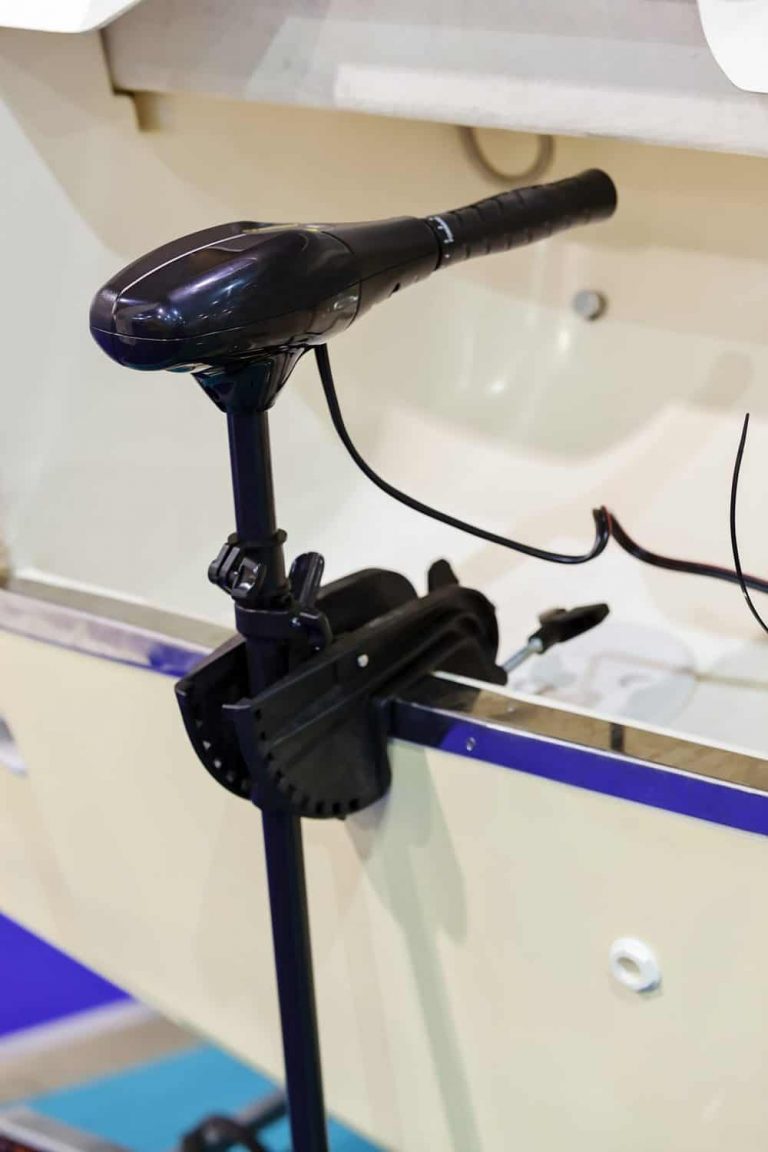
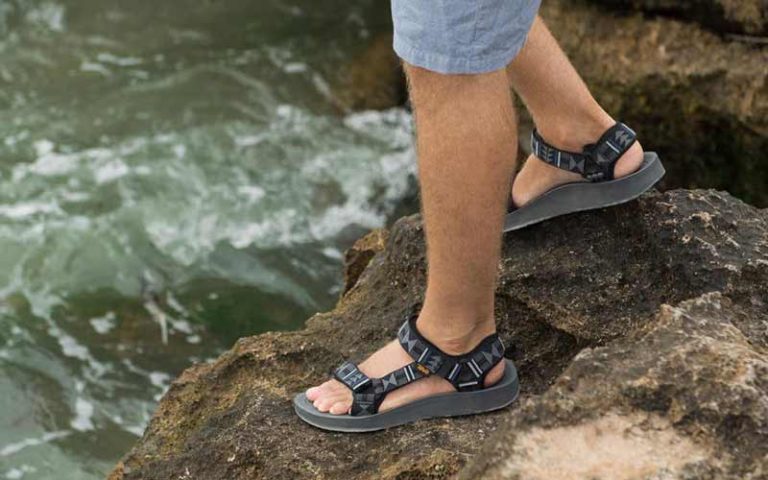
![Are Kayaking Gloves Necessary?<br>[Tips To Warm You Up While Kayaking] Are Kayaking Gloves Necessary?[Tips To Warm You Up While Kayaking]](https://topnotchoutdoor.com/wp-content/uploads/2021/07/Are-Kayaking-Gloves-Necessary-FI-768x480.jpg)
